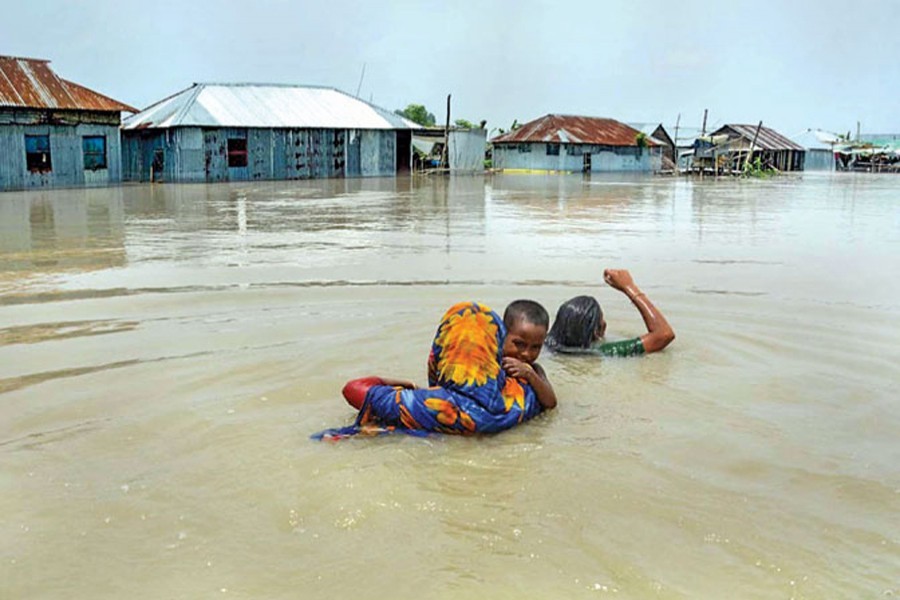This country is no stranger to floods. But at a time coronavirus has wreaking havoc with human lives and livelihoods and the country's south-west is reeling from the cyclone Amphan's blow, floods of considerable magnitude will prove more calamitous than they would have at other times. The prediction though is grim. According to the Flood Forecasting and Warning Centre (FFWC), 18 districts in the country's north and centre are likely to get deluged within the next fortnight. Waters of the Brahmaputra and Teesta are flowing above the danger level and out of 102 points of the major rivers, 78 have recorded rising water flow. Already, five upazilas of Sirajgang district and many areas of greater Sylhet have been flooded. At least 10,000 families in Sundarjang upazila of Gaibandha were marooned by Sunday. So far, the north has started experiencing the deluge or seems to be under immediate threat. But with the Padma also, in spate, more areas not only in the north but also in the centre are likely to suffer flooding.
Better it would be to take preparation for any eventuality arising out of this looming calamity. The country was fortunate enough to complete the boro harvesting but in the affected areas of Sirajgang farmers are reportedly going to count losses on account of damage to their crops only days before harvesting. The FFWC's forecast gives two weeks' duration for the flood - one week for its visitation and another for its gradual disappearance. But about the magnitude of the havoc it may cause, the FFWC maintains silence. However, the indications given by this year's monsoon are likely to make people nervous. Continuous rains in the country's north is a cause for worry. Add to this the heavy rainfalls at the foothills of the Himalayas ranging from India's Chereapunjee, Meghalaya, to Assam, the danger looks graver than just the forecast made here.
Evidently, this season is wetter than many of the previous years with the monsoon air remaining highly active in the Bay of Bengal. So if the rains prolong, the accumulated water on the Indian side will come with a mighty force to sweep away all things before it. The basin-like plains of Bangladesh and West Bengal of India will have to suffer the consequences. This happened in the past and it may happen this time as well. It is wise to get prepared for the worst that may befall the land. After all, misery does not come alone. Preparation beforehand can minimise losses and damages.
Now that the country is already in a state of preparedness to feed the vulnerable under a national programme on account of the pandemic, a little more coordination can help avert a major disaster. The most daunting challenge will be the arrangement for sheltering the flood-affected people. In such areas there is no shelter like the cyclone shelters in the coastal areas. In Gaibandha, the affected people have already started taking shelter in schools and on embankments or roads. If wide areas get inundated, more options should be kept ready for people's temporary shelters and rescue and relief operation. Now the government and NGOs should work together to address the emergency.


